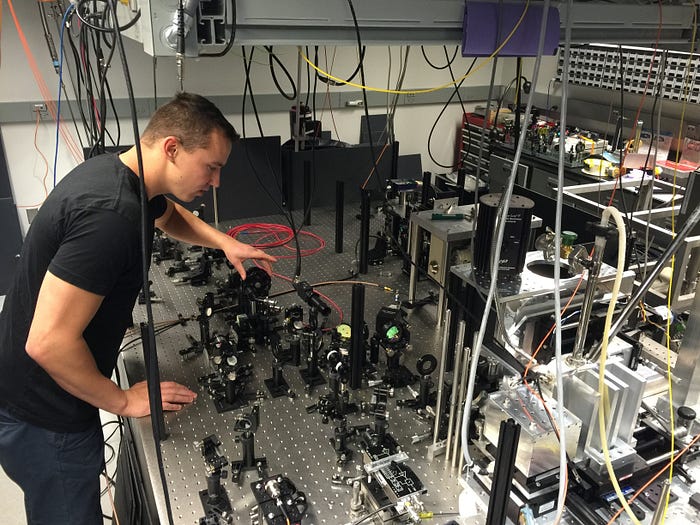Member-only story
We Are On The Cusp Of A Revolution In Quantum Physics

You know the feeling. You see all the clues adding up like weights on your side of Archimedes’ lever, and you know that soon it will, it must tip in your favor; only when it comes to quantum physics, it won’t be the Earth that is moved, but our understanding of the universe itself.
This isn’t like the hunt for endless cheap and clean fusion energy, perpetually thirty years away despite the best efforts of humanity’s best and brightest. No, that search is the province of bleeding-edge engineering. Instead, this is the world of theoretical physics so esoteric that it blurs the boundaries between science and philosophy. Here’s what we know so far:
Wildly different macroscopic objects can be entangled
In 2020, a team of researchers at the Niels Bohr Institute, University of Copenhagen, were able to entangle two very different objects: a vibrating dielectric membrane and a cloud of atoms. The possibility was obvious from the first time a massless photon was entangled with a much-larger atom, a process that can now be accomplished on demand. This achievement, while notable, shouldn’t be too surprising since matter really is just frozen light, something long theorized but not experimentally proven until last year at the Brookhaven National Laboratory.

There seems to be no limit on how many objects can be entangled
In 2015, physicists from MIT and the University of Belgrade successfully entangled three thousand atoms using only a single photon. According to Prof. Vladan Vuletic:
“You can make the argument that a single photon cannot possibly change the state of 3,000 atoms, but this one photon does — it builds up correlations that you didn’t have before…. We have basically opened up a new class of entangled states we can make, but there are many more new classes to be explored.”
What’s more, earlier this year physicists at the Max Planck Institute in Garching, Germany produced a chain of fourteen entangled photons, one after the other, using the…
